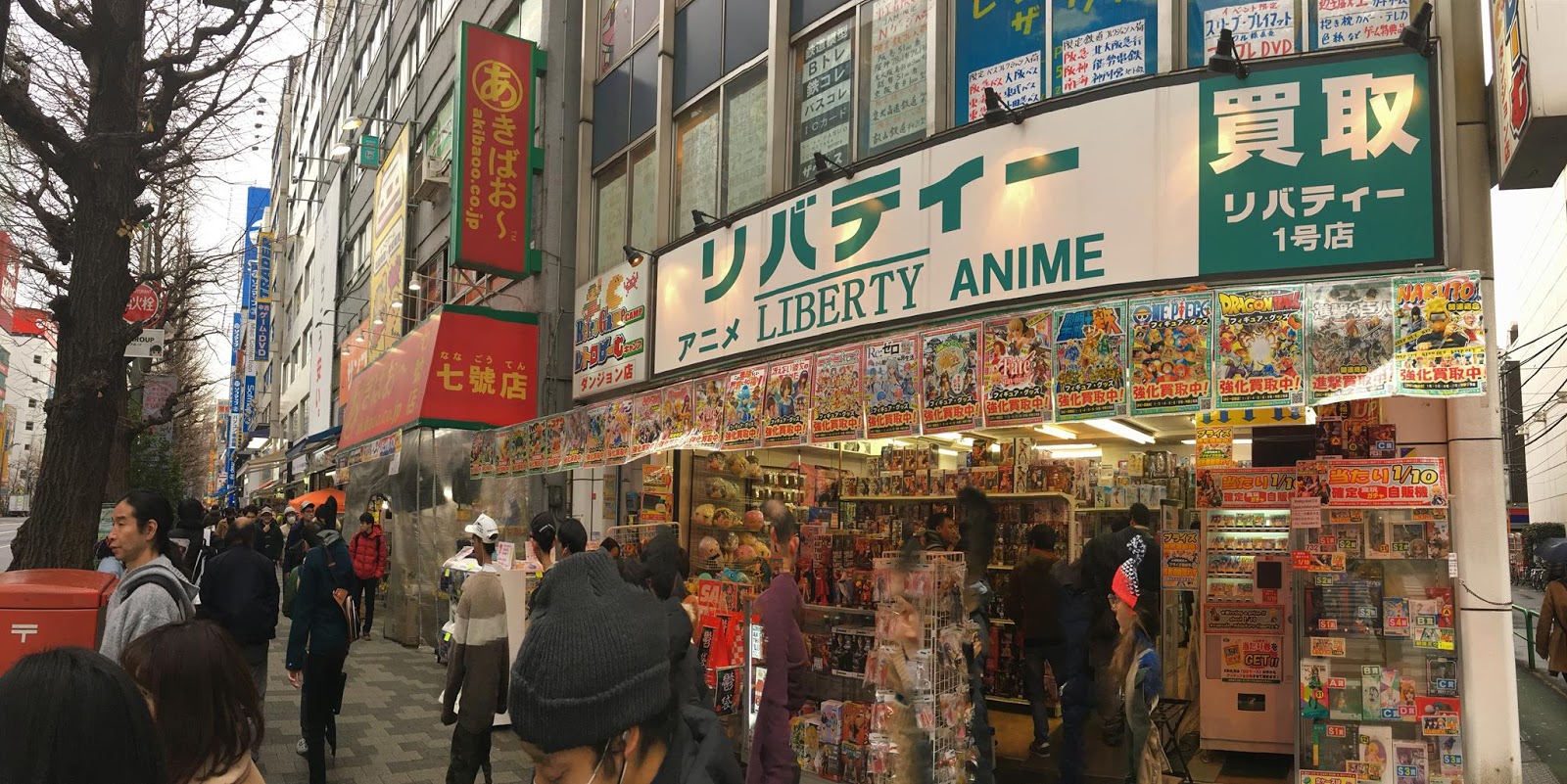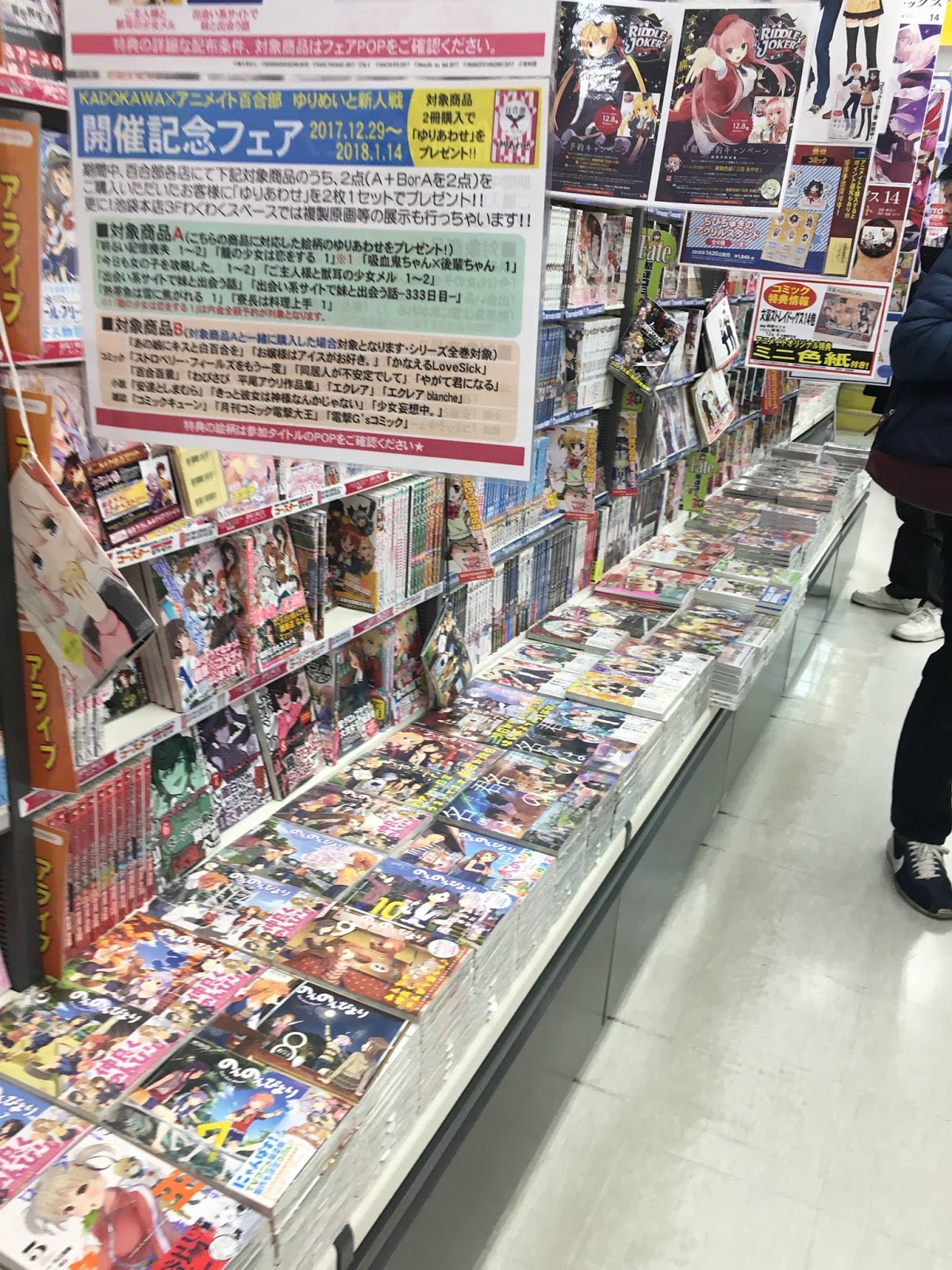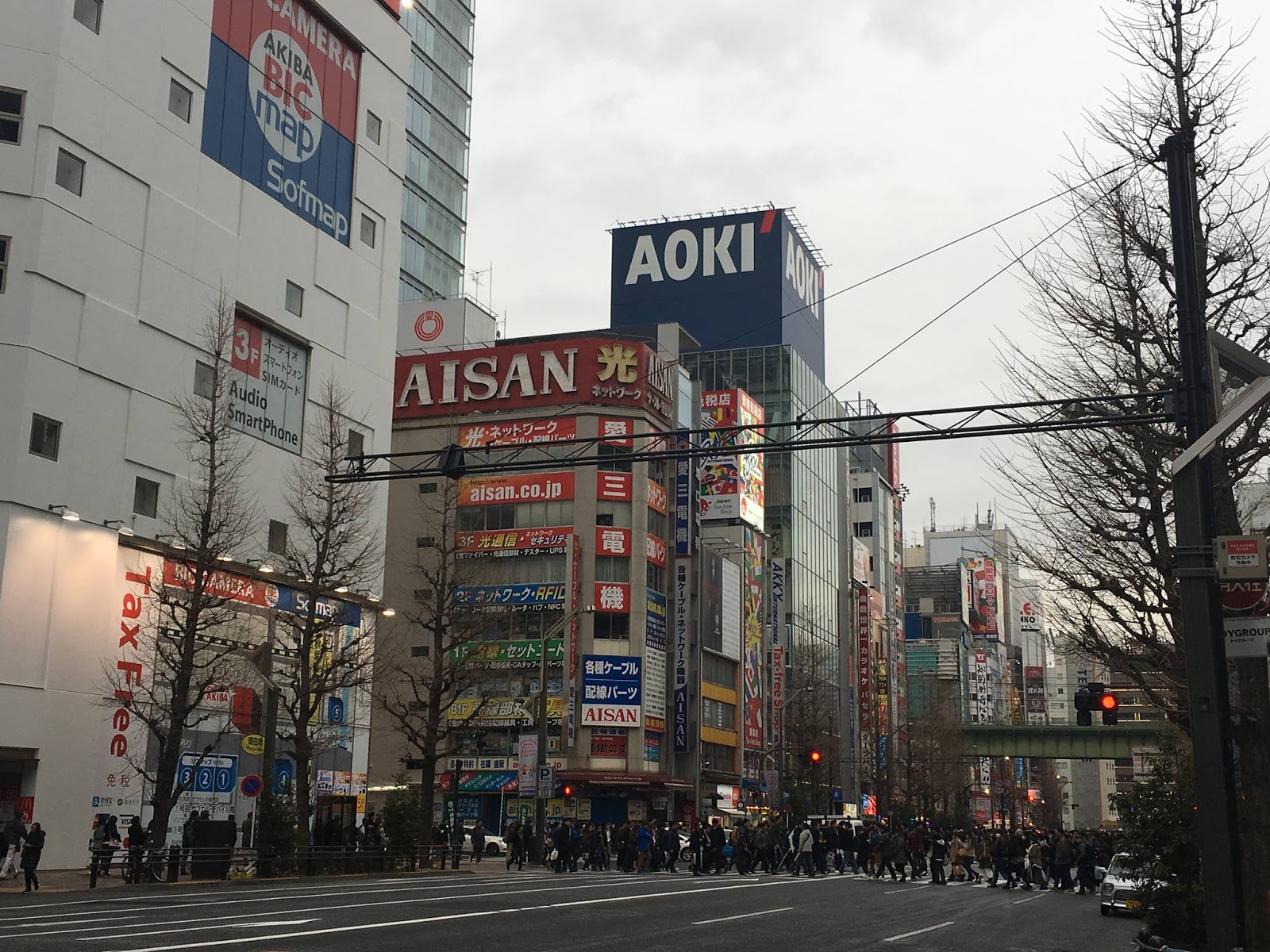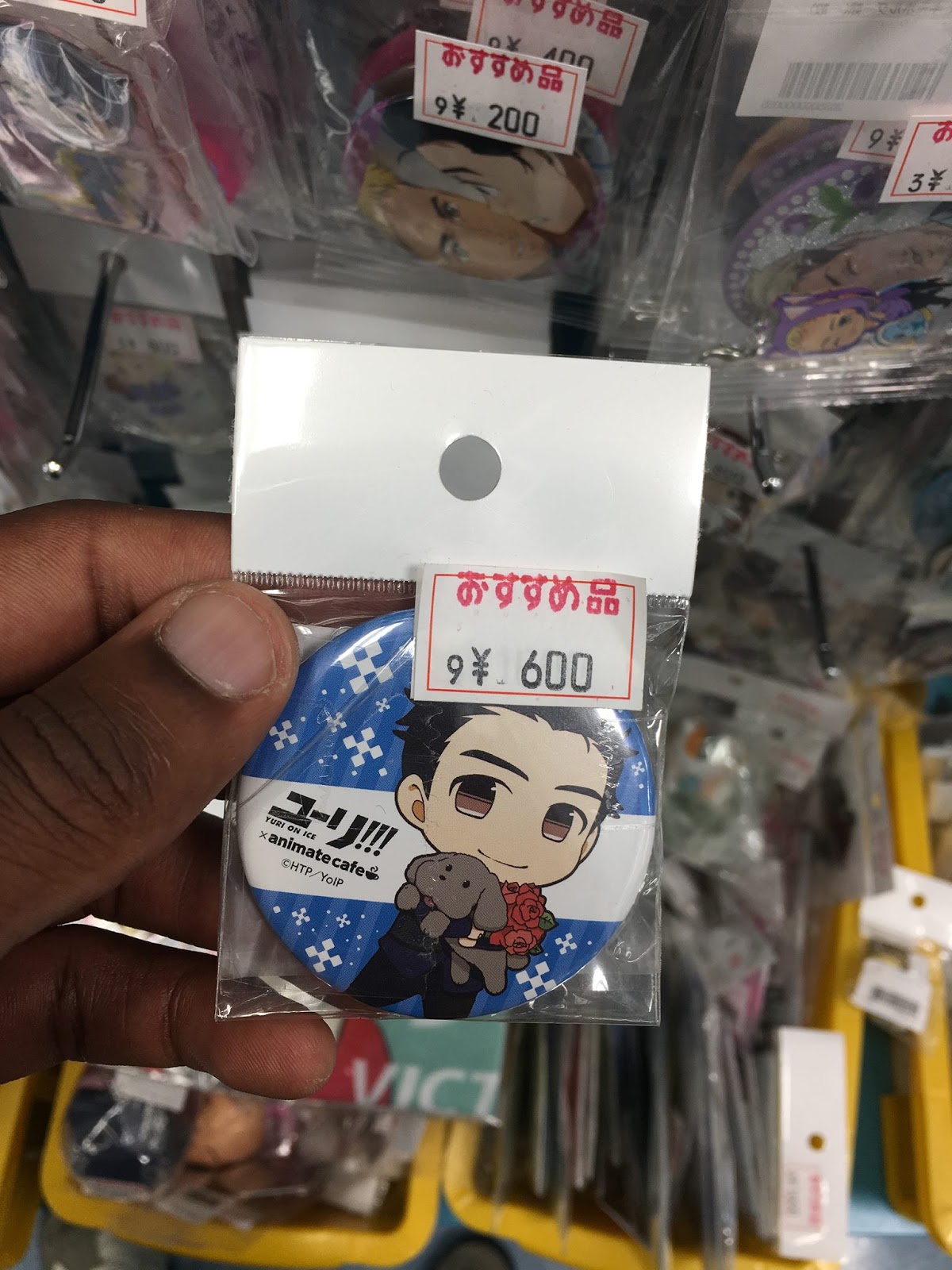A Very Specific Keychain
The shops at Akiba, the Mecca for otaku.

Photos by Bryan Washington
About a week into my stay in Setagaya, I decided to give Akihabara a second try. It’s an area in central Tokyo, mostly famous for its electronics and anime holdings. I’ve been in the city for the past few weeks, mostly recovering from a terminal graduate degree, and the other day it occurred to me that I needed a keychain. The night before, I’d been out in the street at this takoyaki stand by my AirBnB, smoking and joking with the neighbors, when the ground started shaking. I lost my shit. Dropped my food and everything. But the folks standing around me didn’t miss a beat; they just grabbed the nearest table. If anything, they started laughing harder. There’d been an earthquake warning that afternoon. My new friends asked if it had been my first one. The secret, a woman in a cowboy hat told me, was keeping everything together. Holding your cool. That was the exact opposite of what I’d done.
So: a keychain. Those are my thing. As someone who would lose his bones if not for his skin, I have so many. But I wanted a very specific one, a highly particular still from the intro of a highly particular series, the sort of thing that, even in the most esoteric comic shops and conventions in the States, you’d be hard-pressed to find. And that could, I think, be one of the best things about Akihabara: if you can think of a thing, there’s a fair chance that you’ll find it, and without the online overlord wareshop monopoly.

If you haven’t heard of Akiba, or the stores surrounding it namesake station, don’t worry. I found out through this manga called “Genshiken” back in junior high. Calling it the city’s epicenter for otaku culture would be an understatement—it’s the sun around which it all revolves. Plenty of folks pass through to pick up cheap electronics, and plenty of folks pass through for the maid cafes, or the underground cat diners—but one of the area’s larger draws is its role as an anime and manga hub. Some of the larger shops, like Animate, or Mandarake, traffic in specific fandoms. If there’s a series or character or shipping you’re fond of, there’s a good chance you’ll find it there. And if you’re looking for something niche, there’s no better place: a faux-jersey from that volleyball manga you should’ve started reading last year? It’s here. A poster sized print from that one Dragon Ball episode you loved as a kid? Aquí. And then there are the slightly more esoteric offerings: fan-comics, flavored boots, shoes with hands for soles.
If you were born in the States in the late ’80s or early ’90s, your options for home-grown animation were actually pretty shitty. Most of the good animated cultural offerings, and also all of the good video games, inevitably came from Japan. So when I visited last summer, I nearly fell out from the nostalgia—like I had an anxiety attack. It was just too much. Like, here’s a childhood staple on this truck passing you by. And streamers of that series you’ve been meaning to watch. And flashing lights, and booming J-POP, and holy shit, all of these people, where did they come from. What should’ve been a very nice day ended up with me hyperventilating outside of the Gundam Café (which is brilliant).

So I learned I had to pace myself. The next day, I took the Den-en-toshi line after lunch, which was yet another mistake. There are so many ways to get to Akihabara, but as one of the most crowded train lines on our planet, despite being the quickest route, it’s almost never the ideal. But, either way you swing it, if you’ve got Google Maps, and pocket wi-fi (!), navigating Tokyo in 2018 is hardly the labyrinth that it would’ve been even two years ago. Even if you, like me, are someone who can get lost in a CVS.
I didn’t have any luck in the first few stores I dropped into, all of which had some pretty nice crowds. But eventually I ended up on the second floor or a secondhand hobby shop, whose name I can’t tell you because I can’t read kanji anymore. Rather than the throngs pulsating everywhere else, the vibe was more in line with folks looking, very determinedly, for one thing. There were loads of teens wandering around, and a handful of businessmen, and a couple of folks in costumes rifling through model set kits. The aisles were crowded, but not congested. We could have been in a Radio Shack.
The diversity of the shoppers is what got me. In the States, after a certain age, ascribing to any particular fandom, outside of what’s deemed acceptable by your aggregate friend groups in the cultural moment (i.e., the elf sex show, the Archie sex show, the show where everything that can go wrong does) is also a sort of comment on your character. Like, you’re a particular kind of person. And I’m definitely not saying that isn’t the case in Japan (it’s not my place to), but the idea of what’s acceptable to consume for entertainment feels a bit looser, and content consumption isn’t as cleanly divided between what’s “obviously” appropriate and not (although, at the same time, when lauding these series and games as “wild” and “wacky”, foreigners always run the risk of over-exoticizing an entire culture). I’ve spotted seniors and mothers carrying toddlers scrolling through manga on the rail. I saw this dude in a Chicago Bulls snapback and Yeezys in a genuine conundrum over Animal Crossing. None of this was shocking, and nobody cared; or, better yet, everyone cares to mind their business. Would that this were true all over the world.
But my keychain: I couldn’t find it. After another pair of second-hand stores, I was ready to give it up. And I would have, if not for a group of women in hijabs looking very determinedly through a line of Detective Conan pins. One woman was furiously checking the seams of a Conan doll’s feet, before placing one Conan back in the pile, and investigating the coat of another. She caught me staring, and because I have one of those faces that people just walk up and talk to, she asked, in English, if I knew what I was looking for.
I’m not a fan of bothering people with my issues, but still. When I explained what I wanted, she nodded, and said, Oh, that’s over there
And it was. A whole wall. Keychains on keychains.

One time, I was telling a (white) friend about Akiba, and he asked, after assuring me that he was totally okay with the idea, if these fandoms weren’t mostly unhealthy. Couldn’t all of those people have been doing something else? Who did it benefit, really? And the answer I gave him them, that comes to mind now, is: themselves. It benefits everyone. You found a thing, and it made you happy. Imagine if that were always so easy to come by. Walking through Akihabara, there’s this motif—that if this many people can be called upon to do anything in congress, anything is possible. That, in itself, is awesome. Because it’s been a rough year. So you go into town looking for a keychain. You find a community. You have something to smile about until you lose them again.
